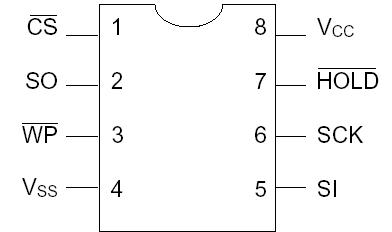NM25C041: Features: ·2.1 MHz clock rate @ 2.7V to 5.5V·4096 bits organized as 512 x 8·Multiple chips on the same 3 wire bus with separate chip select lines·Self-timed programming cycle·Simultaneous programmin...
floor Price/Ceiling Price
- Part Number:
- NM25C041
- Supply Ability:
- 5000
Price Break
- Qty
- 1~5000
- Unit Price
- Negotiable
- Processing time
- 15 Days
SeekIC Buyer Protection PLUS - newly updated for 2013!
- Escrow Protection.
- Guaranteed refunds.
- Secure payments.
- Learn more >>
Month Sales
268 Transactions
Payment Methods
All payment methods are secure and covered by SeekIC Buyer Protection PLUS.

 NM25C041 Data Sheet
NM25C041 Data Sheet







